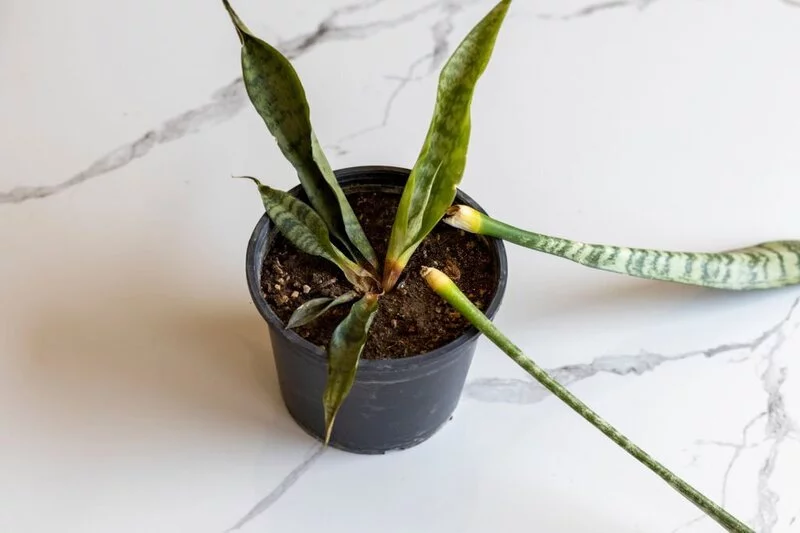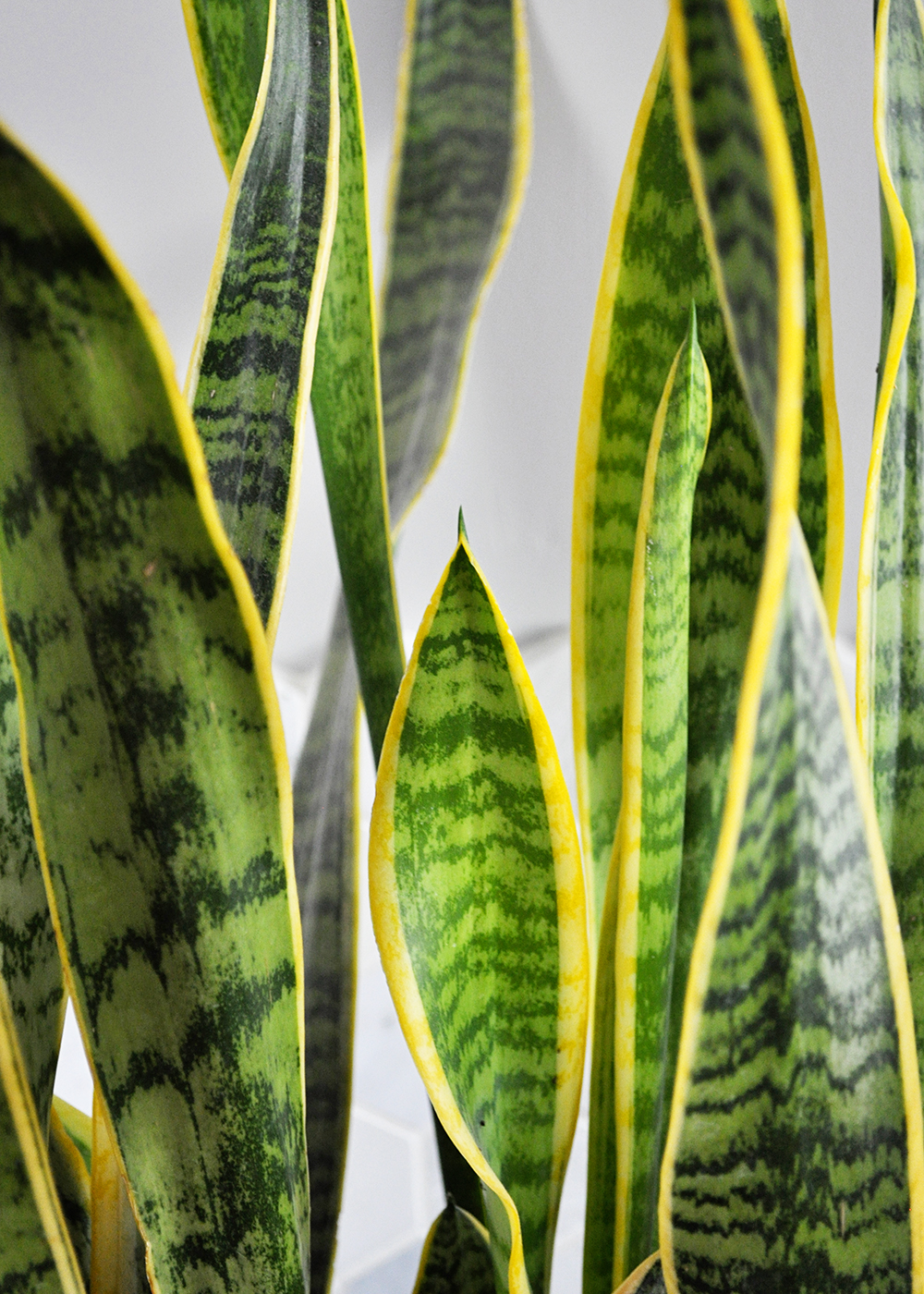Some Known Details About Snake Plant Leaves Turning Yellow
Some Ideas on Snake Plant Leaves Turning Yellow You Should Know
Table of ContentsWhat Does Snake Plant Leaves Turning Yellow Mean?An Unbiased View of Snake Plant Leaves Turning YellowFascination About Snake Plant Leaves Turning YellowSnake Plant Leaves Turning Yellow Fundamentals ExplainedSnake Plant Leaves Turning Yellow Can Be Fun For Anyone10 Simple Techniques For Snake Plant Leaves Turning Yellow
If overwatering in snake plants is not dealt with, the yellow patches of your mother-in-law's tongue plant will transform dark brownish or black. To dismiss any other causes of snake plant fallen leave yellowing, get rid of the plant from its pot and inspect the roots to see if they're soaked and have a nasty smell.
Below's just how to save a snake plant that's transforming yellow: Quit watering your snake plant till the dirt runs out entirely if the yellowing is because of overwatering. Return to watering, however not greater than as soon as weekly. Generally of thumb, prevent watering your snake plant up until the leading 2 inches of the dirt really feel dry.
Getting My Snake Plant Leaves Turning Yellow To Work
This will certainly assist to increase drain rates, thinking about the heat and sunshine conditions during the day. Proper water drainage involves utilizing a fast-draining soil mix and a growing pot with water drainage openings at the base. It is best to utilize a soil mix that contains perlite and crude sand for quick drainage.
There's a positive side as you can grow new plants by propagating the few continuing to be fallen leaves that are still healthy. Referrals.

Water is important in absorbing nutrients necessary for chlorophyll. Absence of water creates the disintegration of chlorophyll.
Snake Plant Leaves Turning Yellow Things To Know Before You Buy
Without water, your plant can not soak up the mineral, some crucial for chlorophyll manufacture. Thus you might discover some yellowing or discoloration. Serpent plants love a damp, not soggy, and you should not allow the potting mix to dry completely for a very long time. We recommend sprinkling your snake plant after the soil dries completely or the majority of it is dry.
A big one might trigger overwatering, and if it is also tiny, your plants will dry quickly. When watering, saturate the dirt till excess water comes from drain holes. Pour any type of water that gathers on the saucer. Lastly, never follow a serpent plant watering session. Rather, constantly feel to ensure the potting mix is completely dry at the very least half-down the pot.

Some Known Incorrect Statements About Snake Plant Leaves Turning Yellow
You can also get cool frames. In warm summer seasons or during warm front, take your plants to cooler places. Additionally, do not put your plants near residence heating unit vents, radiators, fire places, or anything that produces heat. Finally, avoid temperature level sudden drops and spikes. They will stress your plant.
Stunted development is one more indication. It activates enzymes entailed in chlorophyll development. A lack will trigger in-between capillaries yellowing on young leaves. Additionally, there will certainly be slow development and sunken tan places on the yellowed locations. When it is lacking, plants collect Recommended Reading nitrates but stop working to utilize them to make healthy proteins.
Although snake plants have a record for being almost difficult to eliminate, they nonetheless experience a reasonable share of concerns. Snake Plant Leaves Turning Yellow. You are not the only one that has actually observed that your serpent plant's leaves are transforming yellow. We will check out the reasons serpent plant leaves turn yellow and just how to take care of it
Snake Plant Leaves Turning Yellow Fundamentals Explained
Since snake plants are susceptible to root rot, they will certainly not grow if watered excessively. This is normally the suitable balance if you let your plant dry out however do not let it remain completely dry. You can sprinkle your plant again as soon as the soil seems dry to the touch.
A wet container will weigh substantially larger than a dry pot, so ultimately, you should have the ability to establish just how completely dry your plant is based upon the mass of its container. Serpent plant leaves might come to be yellow if you let your plant dry out, after that wait till the dirt is entirely dry prior to rewatering.
You require to take into consideration even more than simply exactly how commonly you water serpent plants. You likewise have to consider what strikes the fluid when it is positioned in the pot. After sprinkling your plant, you ought to not let the roots linger in water for a few days because this can create origin rot.
How Snake Plant Leaves Turning Yellow can Save You Time, Stress, and Money.
Yellowing leaves can be dealt with by giving the serpent plant the appropriate surroundings and focus. Below are a few of the factors snake plants transform yellow and soft. You are essentially establishing up your snake plant for death when you overwater it. If your plants begin to turn yellow, something is wrong with your treatment.
You just need to supply sufficient supply and guarantee proper water drainage to enable the added water to drain out. Not way too much nor inadequate; there will certainly be an appropriate environment for read review fungi illnesses if there is any type of standing water. The serpent plants can be sprinkled every two to six find out here now weeks.
After putting them in the early morning sun, you will notice that snake plants' development rate would raise and appear healthier. Putting them in the outdoor morning sunlight will certainly require extra water, so once per week is enough. Nonetheless, if the area obtains extreme sunshine and the surface feels completely dry, you can sprinkle them two times weekly.